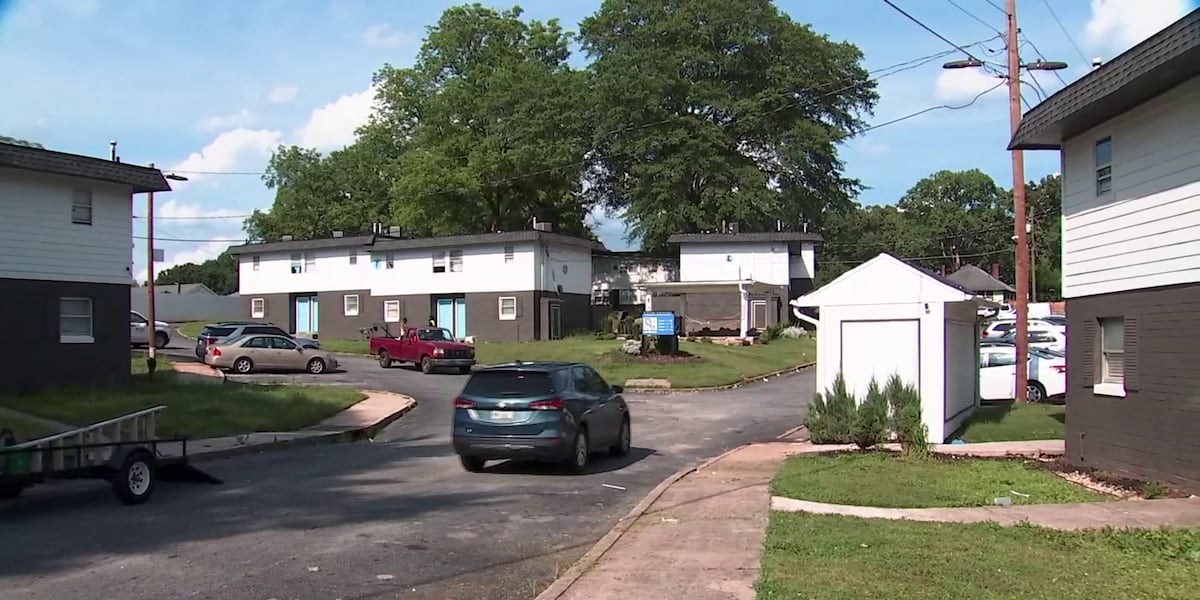Science
Palisades and Eaton firefighters had elevated blood levels of mercury and lead, according to an early study

The immediate risks faced by the firefighters who were on the front lines battling the Palisades and Eaton fires that tore through Los Angeles County may have abated, but long-term health concerns remain.
A team of researchers tested the blood of a group of 20 firefighters who were called to duty when the wildfires hit Los Angeles County communities, and found that they had levels of lead and mercury in their blood that was significantly higher than what health experts consider to be safe — and also higher than firefighters exposed to a forest fire.
The results are part of the longer-term LA Fire Health Study, which is investigating the health impacts of the January fires on those exposed to the toxins it released into the the environment. The team includes researchers from the Harvard T.H. Chan School of Public Health, the UCLA Fielding School of Public Health, UC Davis, the University of Texas at Austin, and the USC Keck School of Medicine.
“What you need to worry about is some of these metals that, when they get burned, they get up in the air,” said Dr. Kari Nadeau, chair of the Department of Environmental Health at Harvard T.H. Chan School of Public Health and one of the researchers working on the project. “They can get into your lungs, and they can get into your skin, and they get can absorbed and get into your blood.”
The group of 20 firefighters — who had come from Northern California to assist in the efforts — were tested just days after the fires were contained. They had toiled for long hours as the two fires razed entire communities, burning homes, cars, businesses, and a still unknown list of chemicals and metals. Combined, the fires killed 29 people and destroyed more than 16,000 structures.
On average, said Nadeau, the firefighters had lead and mercury levels three and five times higher, respectively, than a control group of firefighters who fought a forest fire alone. According to the California Department of Public Health, the average blood lead level for adults in the United States is less than 1 microgram per deciliter.
Researchers are still looking to expand the number of firefighters in the study, as well as the range of toxins they may have been exposed to. Nevertheless, even these limited and preliminary findings bolster a growing worry among firefighters that the L.A. fires may have exposed them to metals and chemicals with long-term health effects.
“The results are pretty alarming,” said Dave Gillotte, a captain with the Los Angeles County Fire Department and president of the Los Angeles County Firefighters Local 1014. “We don’t just fear, but we’re quite confident that we’re going to see health impacts with our firefighters who fought these fires on the front lines.”
Firefighters regularly risk exposure to chemicals and metals — including lead and mercury — when responding to house and commercial fires in an urban setting, Gillotte said. But response to a single house fire, for example, would likely last a few hours, not the days on end of the Palisades and Eaton fires. Firefighters also typically face prolonged exposure to the particulate matter in smoke when fighting wildfires in rural areas — but not the chemicals of an urban setting. The Eaton and Palisades fires presented a combined risk: a wildfire-like blaze with firefighters on the ground for extended periods in an urban setting, with electric vehicles, batteries, chemicals and metals burning in high heat, mixing and spreading with the same wind that was spreading the flames.
“It was a more intense exposure as a result of the wind driving those toxins, even with our protective gear,” Gillotte said.
According to Gillotte, these types of urban wildfires could cause long-term health impacts for first responders similar to those from events like the destruction of the World Trade Center on Sept. 11, 2001. Already, officials from the Sacramento Metropolitan Fire District, the Sacramento Fire Department, and Los Angeles County have begun to test their firefighters for metal and chemical exposure, Gillotte said.
Meanwhile, as part of a separate study, Los Angeles city fire officials have also been looking at the health effects on its firefighters.
“We are very concerned and worried,” said Los Angeles Fire Department Capt. Kevin Frank. The LAFD has so far taken blood and urine samples of about 350 of its firefighters, as part of an ongoing nationwide study, funded by the Federal Emergency Management Agency, to look at firefighters’ biomarkers and exposure to cancer-causing substances. That study — which is different than the LA Fire Health Study and the one mentioned by Gillotte — includes more than 7,000 firefighters from across the country.
After the fires, Frank said, several firefighters who reported to Altadena and Pacific Palisades reported health issues, such as trouble breathing. Nadeau, who is working on the LA Fire Health Study, but not the FEMA-funded national study, noted that exposure to heavy metals can contribute to worse long-term health outcomes.
Firefighters already face higher levels of some illnesses, such as autoimmune diseases, asthma and some cancers, she said. Fire officials said the life expectancy of a firefighter is about 10 years lower than that of the average person.
The LA Fire Health study is still in its early stages. Nadeau says she and her colleagues plan to look for evidence of exposure to other heavy metals in addition to mercury and lead. “We’re going to be studying toxins that haven’t been studied” in firefighters before, she said.
Typically, the results of studies like these are not made public until they have been peer-reviewed and published by a scientific journal. Nadeau said the consortium decided to share some of the preliminary data early, hoping to help residents, civic leaders and first responders understand the impacts of the fires.
“You really want to know: ‘What’s in the air, what’s in the water, what’s in the ash that blew into my kitchen cabinet? Do I let my dog outside?’” she said. “All these questions were coming up and we thought, ‘We really need to serve the community.’” Indeed, while the initial findings will be focused on firefighters’ exposure, the team is also looking into residents’ exposure to heavy metals and chemicals.
Nadeau is also looking ahead: The information, she says, could help fire officials as they face the possibility of another similar fire by helping them better understand the source of the chemicals, how safety equipment was used during the fires, and the efficacy of that gear.
“I’d like to say this is the last of its kind, but we know it won’t be,” she said. “It’s not a matter of if, but a matter of when people undergo a fire like that again in L.A.”

Science
State moves to suspend licenses of troubled L.A. nursing home companies

The California Department of Public Health is moving to suspend the licenses of seven Southern California nursing facilities that have been repeatedly cited in recent years for contributing to patients’ deaths.
The state health department sent letters last month to seven companies in Los Angeles County that received at least two “AA” violations within the last two years, indicating a failure that contributed substantially to the death of a resident.
The facilities include Ararat Nursing Facility, a Mission Hills nursing home cited last year over lapses related to two residents’ deaths less than three months apart.
Mark E. Reagan, an attorney for Ararat, said the facility plans to appeal the suspension.
“Not only is any action for suspension unwarranted, it is also not in the best interests of the community or residents of the facility,” Reagan said. “The facility’s top priority is and always has been the safety and well-being of its residents.”
In addition to Ararat, the state said other facilities targeted for license suspension were Antelope Valley Care Center in Lancaster, Brier Oak on Sunset in Hollywood, Golden Haven Care Center in Glendale, Kei-Ai Los Angeles Healthcare Center in Lincoln Park, Santa Anita Convalescent Hospital in Temple City and Seacrest Post-Acute Care Center in San Pedro.
None of those facilities sent letters by the state responded to requests for comment Thursday.
An AA violation is a relatively rare penalty within state enforcement. Only 99 have been issued to the more than 1,200 skilled nursing facilities in California since the start of 2020, according to state data.
According to California law, the state can move to suspend or revoke a nursing home’s license once the facility gets two such violations within two years.
In practice, the AA citation has been issued so infrequently that few facilities crossed that threshold, said Tony Chicotel, a senior staff attorney with California Advocates for Nursing Home Reform.
Chicotel said he was “pleasantly surprised” by the state’s recent vigor in issuing AA violations and moving forward with license suspensions.
“As far as I know — and I’ve been doing this a long time, a couple decades — this is new,” Chicotel said.
Representatives from the state public health department didn’t immediately respond to requests for comment.
In each case, state investigations found failures and oversights that contributed directly to residents’ deaths.
At Golden Haven in Glendale, which previously operated as Glenoaks Convalescent Hospital, an investigation revealed that staff withheld a diabetic resident’s insulin and failed to monitor the person’s blood sugar for 61 days, resulting in the patient’s hospitalization and death in April 2024, according to the state’s report.
At Brier Oak on Sunset, a resident died in August 2024 after rolling off a bed while her nurse was tending to a different patient, the state said in its citation report, which noted that paramedics found the woman lying on the floor in a pool of blood.
Facilities in violation frequently resolve citations through appeals, settlements or other alternate routes that lower the severity level of their violation, their fine amount or both, Chicotel said.
All seven of the companies cited were informed by letter that their license would be suspended in 30 days from the sending date if they did not exercise their right to appeal. Advocates said they expected all of them to appeal.
Rachel Tate, vice president of ombudsman services at the nonprofit Wise & Healthy Aging, said she was troubled by the fact that many facilities recorded multiple patient deaths before the state took action.
“I understand that we need to be giving facilities due process and these other opportunities, but it seems we are sacrificing patient care in the process,” Tate said. “How many people are you allowed to kill and still get to appeal and keep your license? That’s very concerning.”
Science
Lethal algae bloom is over, but sickened marine mammals aren't safe yet

It was one of the largest, longest and most lethal harmful algae blooms in Southern California’s recorded history, claiming the lives of hundreds of dolphins and sea lions between Baja California and the Central Coast. And now, finally, it’s over.
Levels of toxic algae species in Southern California coastal waters have declined in recent weeks below thresholds that pose a threat to marine wildlife, according to the Southern California Coastal Ocean Observing System, or SCCOOS, which monitors algae blooms.
Although this provides a much-needed respite for marine mammals and the people working to save them from neurotoxin poisoning, scientists warned that the coastal ecosystem isn’t in the clear yet.
Just as January’s firestorms struck well outside Southern California’s typical fire season, this explosion of harmful algae appeared earlier in the year than have previous blooms. Further outbreaks are still possible before the year is up, said Dave Bader, a marine biologist and the chief operations and education officer for the Marine Mammal Care Center in San Pedro.
“It’s definitely over, but we still have the work of rehabilitating the [animals] that we have saved,” Bader said Wednesday. “And we’re not out of the woods with this year at all.”
Bader was among a group of ocean specialists who gathered at the AltaSea complex at the Port of Los Angeles to brief Mayor Karen Bass on the coastal effects of January’s fires.
-
Share via
That disaster didn’t cause the algae blooms. This is the fourth consecutive year such outbreaks have occurred along the Southern California coast, fueled by an upwelling of nutrient-rich waters from the deep ocean.
Yet multiple research teams are currently investigating whether the surge of additional runoff into the sea resulting from the firestorms may have contributed to the recent bloom’s intensity.
No data on the subject are available yet. But given the relationship between nutrients and harmful algae species, Mark Gold of the Natural Resources Defense Council said he would not be surprised if the fires played a role in this year’s severity.
“As a scientist who’s been looking at impacts of pollution on the ocean for my whole career, … one would expect that [fire runoff] is also having impacts on harmful algal blooms, from the standpoint of the intensity of the blooms, the scope, the scale, etc.,” said Gold, the organization’s director of water scarcity solutions. “We’ll find that out when all this analysis and research is completed.”
In terms of animal mortality, this year’s bloom was the worst since 2015-16 outbreak that killed thousands of animals between Alaska and Baja California, said SCCOOS director Clarissa Anderson of UC San Diego’s Scripps Institution of Oceanography.
Four different algae species were present this year. The two most dangerous produce powerful neurotoxins that accumulate in the marine food chain: Alexandrium catenella, which produces saxitoxin, and Pseudo-nitzschia australis, which produces domoic acid.
The toxins accumulate in filter-feeding fish, and then poison larger mammals who gobble up the fish in mass quantities. (This is why the blooms don’t pose the same health risks to humans — very few people eat up to 40 pounds of fish straight from the sea each day.)
Beginning in February, hundreds of dolphins and sea lions started washing up on California beaches, either dead or suffering neurotoxin poisoning symptoms such as aggression, lethargy and seizures. A minke whale in Long Beach Harbor and a gray whale that stranded in Huntington Beach also succumbed to the outbreak. Scientists believe countless more animals died at sea.
The outbreak was more lethal than those in recent years, Bader said, and veterinarians were able to save fewer animals than they have in the past.
Researchers are still grappling with the catastrophe’s full impact on marine mammal species. The outbreak was particularly deadly for breeding females. California sea lions typically give birth in June after an 11-month gestation. At the blooms’ peak, “they were actively feeding for two,” Bader said.
Domoic acid crosses the placenta. None of the pregnant animals the center rescued delivered live babies, he said.
“We don’t really know what the environmental impact, long term, is of [blooms] four years in a row, right during breeding season,” Bader said. “The full impact of this is going to be hard to know, especially at a time when research budgets are being cut.”
As climate change has shifted the timing and intensity of the strong wind events that drive upwellings, “we’re coming into a future where we unfortunately have to expect we’ll see these events with recurring frequency,” Bader told Bass at the roundtable. “The events that drove the fires are the events that drove the upwelling.”
Science
Racing to Save California’s Elephant Seals From Bird Flu

For the last few years, the Marine Mammal Center has been testing any patients with bird-flu-like symptoms, which include respiratory and neurological problems, for the virus.
-

 News1 week ago
News1 week agoVideo: Faizan Zaki Wins Spelling Bee
-

 Politics6 days ago
Politics6 days agoMichelle Obama facing backlash over claim about women's reproductive health
-

 News1 week ago
News1 week agoVideo: Harvard Commencement Speaker Congratulates and Thanks Graduates
-

 Politics1 week ago
Politics1 week agoMusk officially steps down from DOGE after wrapping work streamlining government
-

 News1 week ago
News1 week agoPresident Trump pardons rapper NBA YoungBoy in flurry of clemency actions
-

 Technology1 week ago
Technology1 week agoAI could consume more power than Bitcoin by the end of 2025
-

 Technology1 week ago
Technology1 week agoSEC drops Binance lawsuit in yet another gift to crypto
-

 Technology7 days ago
Technology7 days agoOpenAI wants ChatGPT to be a ‘super assistant’ for every part of your life















